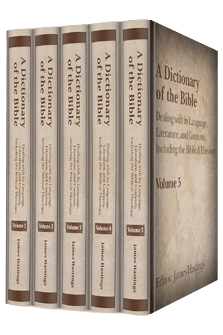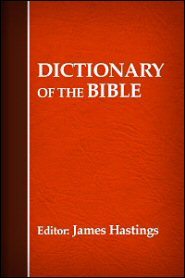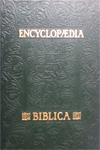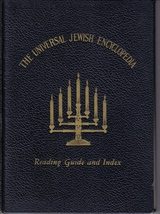Resource Library
Resource Library
Welcome to the Resource Library. Here is where you will find a wealth of information (in one centralized location) in regards to substantiating the fact that YeHoVaH’s most precious, set-apart day of rest is the 7th-Day Biblical Sabbath, also referred to as the New Moon Biblical Sabbath, which is directly in accordance with Scripture and the four phases of the moon, as originally intended and observed.
Previously, this page was titled Source Center and a separate page titled Library; however, we felt that it was fitting to centralize them in one location by combining the two onto one page. During my research, I’ve encountered a plethora of resources that were essential in my studies. However, for the sake of time and space, I selectively chosen which ones to post on this page, which is more than sufficient to solidify my teachings. The key Scripture I continually referred to during my research and study is Deuteronomy 19:15, “…At the mouth of two witnesses or at the mouth of three witnesses a matter is established.” (The Scriptures). In this instance, my witnesses are the resources from ancient archaeological finding and the writings from scholars and scribes who’ve documented key, transitional events throughout history. I must admit, the synchronicity of the various authoritative texts was quite profound and groundbreaking.
If you have been blessed by our research, studies, and findings, and as you are so led, please feel free to click on the Donate button below. Your prayers and support for our ministry will be sincerely and greatly appreciated. If you are hesitant about conducting business online, as many are, feel free to mail-in your financial support at the address located on the Contact page. Again, we sincerely thank you for standing with our ministry and the work that we do. Keep in mind that this is just the beginning of many teaching series that will be birthed from TruthTable Ministries. Shalom and blessings!
A Dictionary of the Bible
Feasts and Fasts
(1) The Sabbath:
“Probably, the Sabbath was originally regulated by the phases of the moon, and thus occurred on the 7th, 14th, 21st, and 28th days of the month, the new moon being reckoned as the first Sabbath.”
(2) The New Moon:
“When under the influence of the Chaldee method of dividing time, the course of the moon with its four phases was adopted as the unit of time measurement, the new moon and the 7th day were naturally regarded as the chief divisions of time, and therefore as holy days (Shultz, OT Theo. i. 204).”
Harding, E. Elmer. (1901). Feasts and Fasts. In Hastings, J. (Ed.), A Dictionary of the Bible, (Vol. 1). (p. 859). New York: Charles Scribner’s Sons.
NOTE: Sited source is in APA Format
Dictionary of the Bible
Feasts:
“1. The Sabbath and the observances akin to it were lunar in character…”
Blunt, A.W.F. (1909). Feasts. In Hastings, J. (Ed.), Dictionary of the Bible (p. 261). New York: Charles Scribner’s Sons.
Sabbath:
“The origin of this institution, and its early history among the Israelites, are involved in much obscurity. That it has affinities with certain Babylonian observances is obvious; but the differences are very marked, and a direct dependence of the one on the other is difficult to understand. It is known that in two months (possibly all) the 7th, 14th, 21st, and 28th days (those in which the moon enters a new phase)…were regarded in Babylonia as unlucky days…”
“In the prophetic and historical books ‘Sabbath’ and ‘new moon’ are associated in such a way as to suggest that both were lunar festivals…”
-See: Amos 8:5, Hosea 2:11, Isaiah 1:18, 2 Kings 4:22
“…[I]t is quite conceivable that some form of Sabbath observance, depending on the phases of the moon, was practiced by the Hebrews in the desert, and that the transformation of this primitive lunar festival into the Sabbath as we find it in the OT was due to the suppression of its superstitious associations under the influence under the national religion of Israel.”
Skinner, J. (1909). Sabbath. In Hastings, J. (Ed.), Dictionary of the Bible (pp. 807-808). New York: Charles Scribner’s Sons.
Time:
“Given this period of 28 days, together with the recurrent phases of the moon. It would naturally be subdivided, like the day itself. Into four divisions or weeks of seven days each. The first occurrence of a week is in Gn 29″, though the Creation is represented as having been completed, including the rest of the Almighty, in a period of seven days, and periods of seven days occur in the history of the Flood. Of the two Heb. names for ‘week’ one is derived from the number seven, and the other is Identical with ‘ Sabbath,’ the day which completes the Jewish week” (p. 936).
“Of instruments to measure time we hear of only one, the sun-dial of Ahaz (2 K 209-11, Is 388), but what shape or form this took we do not know” (p. 937).
Redpath, H.A. (1909). Time. In Hastings, J. (Ed.), Dictionary of the Bible (p. 936-937). New York: Charles Scribner’s Sons.
Encyclopedia Biblica: A Dictionary of the Bible
Sabbath:
“In truth, there is no evidence of the worship of Saturn among the oldest Hebrews (see CHIUN AND SUCCUTH). The week, however, is found in various parts of the world in a form that has nothing to do with astrology or the seven planets…[i]n fact, the four quarters of the moon supply an obvious division of the month…” (p. 4178).
“The bridge which Gunkel fails to construct between the Babylonian atonement-Sabbath and the Hebrew rest-Sabbath, Jastrow [Amer. J. of Theol. 1898, pp. 315-352] endeavours to point out. He remarks that the Heb[rew] šabbāthōn does in fact, like the Bab[ylonian] šabbattum, convey the idea of propitiation or appeasement of the divine anger, and he is of opinion that the Hebrew Sabbath was originally a šabbāthōn— i.e., a day of propitiation and appeasement, marked by atoning rites. At this stage of development it was celebrated at intervals of seven days, corresponding with changes in the moon’s phases, and was identical in character with the four days in each month (7th, 14th, 21st, and 28th) that the Babylonians regarded as days which had to be convened into days of propitiation.” (p. 4180).
“…[I]n consequence of profound changer in religious conceptions among the Hebrews, of the custom of celebrating the Sabbath every seventh day, irrespective of the relationship of the day to the moon’s phases, led to a complete separation from the ancient view of the Sabbath…” (p. 4180).
K.M., & T.K.C., & W.R.S. (1903). Sabbath. In Cheyne, T.K. (Ed.), Encyclopedia Biblica: A Dictionary of the Bible, (Vol. 4). (pp. 4178, 4180). New York: The MacMillan Company.
NOTE: Sited source is in APA Format
Encyclopedia of Religion and Ethics
Sabbath (Babylonian):
“The weekly Sabbath in the inscriptions.—This revealed only, and that dimly, in certain lists of offerings found at Warka (the Erech of Gn 10[:]10). These tablets, which are of late date, are best represented by the series in A. T. Clay, ‘Babylonian Texts. ‘ The texts which they bear are in tabular form, and deal with sheep for slaughter and sacrifice. On the 7th, 14th, 21st, and 28th days of the months to which the tablets refer a sacrificial kid (or lamb) was to be offered…”
Pinches, T.G. (1919). Sabbath (Babylonian). In Hastings, J. (Ed.), Encyclopedia of Religion and Ethics. (Vol. 10). (p. 890). New York: Charles Scribner’s Sons.
Festivals and Fasts (Hebrew):
“The Sabbath.—From probably an early period every 7th day was observed as the holy day of rest. Since the šabattu is described in the cuneiform inscriptions as ‘ a day of rest for the soul,’ Sayce (Higher Crit. and Mon., London, 1894, p. 74) argues for a Bab[ylonian] origin, and compares it with the observance of the 7th, 14th, 21st, 28th days, as days on which it was unlawful to do certain kinds of work.”
“It seems likely that the original purpose of the Sabbath was to consecrate every phase of the moon. It may have been derived in the first instance from some form of moon-worship. If so, the purpose was lost sight of when, if not before, a conventional week of 7 days was substituted for the lunar phase.”
Woods, F.H. (1912). Festivals and Fasts (Hebrew). In Hastings, J. (Ed.), Encyclopedia of Religion and Ethics. (Vol. 5). (p. 863). New York: Charles Scribner’s Sons.
Calendar (Hebrew):
“…[T]he month was a moon period or lunation ; the week comprised very nearly a quarter of a lunation; and the day was, of course, the period of the earth’s rotation on its axis.
“It may be further questioned whether there ever was among the early Hebrews any attempt to adapt the week of 7 days to the lunation. There is some ground for such a supposition, in the fact that in the most ancient Babylonian calendar every 7th day of the moon—the 7th, 14th, 21st, and 28th —was a dies nefastus, on which no public or official work could be done (Sayce, Higher Crit., 1894, p. 74). It would seem, then, that the old Babylonian month was practically a period of 4 weeks, with one or two intercalary days added at the end to make it agree with the lunation.”
Woods, F.H. (1908). Calendar (Hebrew). In Hastings, J. (Ed.), Encyclopedia of Religion and Ethics. (Vol. 3). (p. 108). New York: Charles Scribner’s Sons.
NOTE: Sited sources are in APA Format
The Interpreter’s Dictionary of the Bible
Feasts and Fasts: The Festal Observances
a. The sabbath. “Originally sabbaths were very probably lunar observances, marking important phases of the moon. In Israel, however, the sabbath no longer depends on this natural cycle; it occurs every seventh day, cutting across and gradually superseding in importance such lunar observances as the new moon.”
b. The New Moon. “The Feast of the New Moon…was probably the original form of the sabbath, before the latter was separated from the lunar cycle.”
Rylaarsdam, J.C. (1962). Feasts and Fasts: The Festal Observances. In Buttrick, G.A. (Ed.), The Interpreter’s Dictionary of the Bible. (Vol. 2). (p. 262). New York: Abingdon Press.
Moon
The moon in the calendar. “The standard calendar in Israel was lunar…” “At full moon, persons traveling on business return home, if possible (Prov 7:20). This probably reflects the widespread notion that the waning moon, and especially the night when it begins to wane, is unpropitious for conduct of affairs. On the theory that the sabbath was originally the full moon…”
Gaster, T.H. (1962). Moon. In Buttrick, G.A. (Ed.), The Interpreter’s Dictionary of the Bible. (Vol. 3). (pp. 436-437). New York: Abingdon Press.
Note: Sited sources are in APA format.
The Jewish Encyclopedia
Week: Connection with Lunar Phases
“…[W]hile the week of seven days was connected with the lunar month, of which it is, approximately, a fourth. The quadripartite division of the month was evidently in use among the Hebrews and other ancient peoples; but it is not clear whether it originated among the former.” “…[I]t is equally possible that observations of the four phases of the moon led the Hebrew nomads spontaneously and independently to devise the system of diving the interval between the successive new moons into four groups of seven days each.” “At the end of four weeks an interval of one or two days might intervene before the new could begin. At an early date, however, this intimate connection between the week and the moon must have been dissolved, the chief cause of the fixed week of seven days being, in all probability, the predominance of the seventh day as the Sabbath…”
E.G.H (1909). Week: Connection with Lunar Phases. In Singer, I (Ed.), The Jewish Encyclopedia. (Vol. 12). (p. 481). New York: Funk and Wagnalls
Festivals: Pastoral Feasts
The Sabbath, as marking the end of the week, reveal its lunar origin; the phases of the moon having taught the shepherds…to divide the period elapsing between two new moons into four equal groups (weeks)…” “…[T]he Sabbath was a movable festival. Later the week and the Sabbath became fixed; and this gradually resulted in taking away from the New Moon festival its popular importance.”
E.G.H (1910). Festivals: Pastoral Feasts. In Singer, I (Ed.), The Jewish Encyclopedia. (Vol. 5). (p. 376). New York: Funk and Wagnalls
The New Schaff-Herzof Encyclopedia of Religious Knowledge
Week:
“Yet even the Babylonians did not have a seven-day week, though the seventh, fourteenth, twenty-first, and twenty-eighth days were ” evil days,” when fresh bread, fresh roasted meats, fresh clothing, and the like were unlawful for ” the shepherd of the great people” (the king?)” (p. 283).
“But seven is a prime number, its magnitude easily comprehensible yet large enough to be useful. A heightening of the value may have come about through the coincidence of the seven-day periods of the moon…” (p. 283).
Lotz, W. (1912). Sabbath. In Jackson, S.M. (Ed.), The New Schaff-Herzof Encyclopedia of Religious Knowledge. (Vol. 12). (p. 283). New York: Funk and Wagnalls Company.
Moon, Hebrew Conception of The:
“Similarly among the Hebrews the idea of the moon as a divider of time was predominant, and its measuring-function is strikingly expressed in Ps. civ. 19: “He appointed the moon for seasons.””
“There is general agreement that the seven-day period was derived from Babylonia, where it was employed in pre-Semitic times—this is confirmed by the fact that not only were the seventh, fourteenth, twenty-first, and twenty-eighth days of the month observed…”
“The union of the planetary bodies with the names of the days of the week seems to have been a very late phase, probably not completed till the Greek period” (p. 492).
Gilmore, G.W. (1910). Moon, Hebrew Conception of The. In Jackson, S.M. (Ed.), The New Schaff-Herzof Encyclopedia of Religious Knowledge. (Vol. 7). (p. 492). New York: Funk and Wagnalls Company.
Day, The Hebrew:
“The hour, dependent upon the sun and the seasons, varies in the latitude of Palestine from forty-nine to seventy-one minutes in length. A sun-dial (doubtless an obelisk with steps), which marked the hours as the shadow passed, was used by Hezekiah (II Kings xx. 9-10)” (p. 367).
Orelli, C.V. (1909). Day, The Hebrew. In Jackson, S.M. (Ed.), The New Schaff-Herzof Encyclopedia of Religious Knowledge. (Vol. 3). (p. 367). New York: Funk and Wagnalls Company.
The Popular and Critical Bible Encyclopedia and Scriptural Dictionary
Sabbath:
“Among all early nations the lunar months were the readiest large divisions of time, and though the recurrence of the lunar period in about 29 ½ days was incompatible with any exact subdivision, yet the nearest whole number of days which could be subdivided into shorter periods, would be either thirty or twenty-eight; of which the latter would, of course, be adopted, as admitting of division into 4, corresponding nearly to those striking phenomena, the phases or quarters of the moon. Each of these would palpably correspond to about a week…”
“In order to connect the reckoning by weeks with the lunar month, we find that all ancient nations observed some peculiar solemnities to mark the day of the new moon.”
“In other parts of the Bible we find the Sabbaths and new moons continually spoken of in conjunction; as (Is. i:i3, etc.) the division of time by weeks prevailed all over the East, from the earliest periods among the Assyrians, Arabs, and Egyptians…”
Whitford, W.C. (1922). Sabbath. In Fallows, S. (Ed.), The Popular and Critical Bible Encyclopedia and Scriptural Dictionary, (Vol. 3). (p. 1497). Chicago, IL: The Howard-Severance Company.
The Universal Jewish Encyclopedia
Holidays:
“Sabbaths and New Moon (Rosh Hodesh), both periodically recurring in the course of the year. The New Moon is still, and the Sabbath originally was, dependent upon the lunar cycle. Both date back to the nomadic period of Israel. Originally the New Moon was celebrated in the same way as the Sabbath…”
Joseph, M. (1941). Holidays. In Landman, I (Ed.), The Universal Jewish Encyclopedia. (Vol. 5). (p. 410). New York: Universal Jewish Encyclopedia, Inc.
Week:
“The idea of the week, as a subdivision of the month, seems to have arisen in Babylonia, where each lunar month was divided into four parts, corresponding to the four phases of the moon. The first week of each month began with the new moon, so that, as the lunar month was one or two days more than four periods of seven days…” “Every seventh day (sabbatum) was regarded as an unlucky day. This method of reckoning time spread westward throughout Syria and Palestine, and was adopted by the Israelites…” “With the development of the importance of the Sabbath as a day of consecration and emphasis laid upon the significant number seven, the week became more and more divorced from its lunar connection, so that by the time of the Second Temple it was merely a period of seven days and no longer depended on the new moon. From Judaism the week passed over to Christianity, and through the influence of the latter was generally adopted throughout the Roman empire; Islam also made use of the week for its Sabbath days.”
Cohen, S. (1943). Week. In Landman, I (Ed.), The Universal Jewish Encyclopedia. (Vol. 10). (p. 482). New York: Universal Jewish Encyclopedia, Inc.
PC Study Bible: Professional Reference Library
Adam Clarke’s Commentary
Liturgical Sections of the Law & Prophets
“In the synagogues the law is read entirely through in the fifty Sabbaths of their lunar year.”
(from Adam Clarke’s Commentary, Electronic Database. Copyright © 1996, 2003, 2005, 2006 by Biblesoft, Inc. All rights reserved.)
Easton’s Bible Dictionary
Month
“From the time of the institution of the Mosaic law the month among the Jews was lunar. The cycle of religious feasts depended on the moon. The commencement of a month was determined by the observation of the new moon.
“The Hebrews and Phoenicians had no word for month save [except] ‘moon,’ and only saved their calendar from becoming vague like that of the Moslems by the interpolation of an additional month. There is no evidence at all that they ever used a true solar year such as the Egyptians possessed…”, Palestine Quarterly, January 1889.
(from Easton’s Bible Dictionary, PC Study Bible formatted electronic database Copyright © 2003, 2006 Biblesoft, Inc. All rights reserved.)
Fausset’s Bible Dictionary
Week
Hebrew shabua’, a period of sevens; Greek hebdomas. “Is astronomically an appropriate division, as being the fourth of the 28 days’ lunar month (more exactly 27 days, 7 hours, and 43 minutes)…Rome adopted the division by weeks.”
(from Fausset’s Bible Dictionary, Electronic Database Copyright © 1998, 2003, 2006 by Biblesoft, Inc. All rights reserved.)
Sabbath
“G. Smith discovered an Assyrian calendar which divides every month into four weeks, and the seventh days are marked out as days in which no work should be done.”
(from Fausset’s Bible Dictionary, Electronic Database Copyright © 1998, 2003, 2006 by Biblesoft, Inc. All rights reserved.)
International Standard Bible Encyclopedia
Sabbath
2. Critical Theories: “The older theories of the origin of the Jewish Sabbath (connecting it with Egypt, with the day of Saturn, or in general with the seven planets) have now been almost entirely abandoned (see ASTRONOMY , I, 5). The disposition at present is to regard the day as originally a lunar festival, similar to a Bablonian custom (Schrader, Stud. u.Krit., 1874), the rather as the cuneiform documents appear to contain a term sabattu or sabattum, identical in form and meaning with the Hebrew word sabbathon.” Thus wrote Professor C.H. Toy in 1899 (Journal of Biblical Literature, XVIII, 190). In a syllabary (II R, 32, 16 a, b) sabattum is said to be equivalent to um nuh libbi, the natural translation of which seemed to be “day of rest of the heart.” Schrader, Sayce and others so understood the phrase, and naturally looked upon sabattum as equivalent to the Hebrew Sabbath.”
“There was, however, a sort of institution among the superstitious Babylonians that has been compared with the Hebrew Sabbath. In certain months of the year (Elul, Marcheshvan) the 7th, 14th, 19th, 21st and 28th days were set down as favorable days, or unfavorable days…”
(from International Standard Bible Encyclopedia, Electronic Database Copyright © 1996, 2003, 2006 by Biblesoft, Inc. All rights reserved.)
International Standard Bible Encyclopedia Revised Edition
Number
F. Seven (Hebr. šeba; Gk. heptá). “The number seven is the most significant symbolic number in the Bible, appearing in some manner in almost six hundred passages. It was a sacred number in virtually all the ancient Semitic cultures. Some attribute its importance to the worship of seven heavenly bodies: sun, moon, and five known planets. Others suggest, more probably, that it reflects the division of the lunar month into four seven-day weeks. In the OT the week has seven days with the seventh being the sabbath (Gen 2:2 f)…”
Heal
A. Sabbath Observance. “The practice of regarding specific days of each month as restricting the activities of certain classes of people apparently arose during the 3rd millennium B.C. in Mesopotamia…Other days, such as the seventh, fourteenth, twenty-first, and twenty-eighth, were also regarded as ill omened or evil, and the texts placed restrictions upon certain forms of activity (see SABBATH). Whereas the Babylonians calculated their “sabbaths” from the beginning of each month.”
Calendar
3. Week. The origin of the seven-day week is continually debated (cf., e.g., RSV and NEB on Gen 29:27). “…Theories proposing that the week was derived originally from a lunar phase may be valid but have no supporting biblical evidence.”
Sabbath
I. Etymology and Meaning of the Term. — “The derivation and exact meaning of Hebr. Šabbăt are uncertain. Among the numerous proposals, the most likely are the following. (1) The noun Šabbăt may be derived from Akk. šabattu, which also referred to a specific day (see II.A below).”
II. Origin. — “Scholars in the late 19th and early 20th cent. proposed several theories about the origin of the sabbath, based upon apparently similar practices in other ancient cultures…”
A. Lunar. “The above-mentioned Akk. Šabattu has been described as the Mesopotamian forerunner of the sabbath…”
“A related theory proposes an ancient Arabic origin (see D. Nielsen, Die altarabische Mondreligion and die mosaische Uberlieferung [1904]). In their worship of the moon the ancient Arabs supposedly paid particular attention to the four monthly phases of the moon, i.e., where the moon “sat.” The Arabic word for “sit,” tabat, supposedly became Akk[adian]. Šabattu and later Hebr[ew]. Šabbăt. Regular human rest at approximately seven day intervals thus would be patterned after the moon’s rest…”
B. Taboo Day. “In addition to the Šabattu day, ancient Mesopotamian sources also mention “evil days” on which the king, cultic officials, and physicians observed various taboos or prohibitions…The “evil days” occurred at approximately seven-day intervals: the seventh, fourteenth, nineteenth, twenty-first, and twenty-eighth days of certain months. This fact, plus the fact that some of Israel’s sabbath legislation includes certain prohibitions (Ex 16:29; 35:3), has led some scholars to conclude that the sabbath developed from these “evil days” (G. Smith, Assyrian Discoveries [1875]).”
E. Conclusion. “…The OT testifies to the relationship between Israel and other ancient Near Eastern peoples, and this relationship clearly influenced Israel. While no particular parallel or similarity conclusively or directly accounts for the origin of the sabbath, the similarities and parallels are striking enough to be more than coincidental. The biblical sabbath may have been an Israelite adaptation of a lunar reckoning of time; it may have been related indirectly to Mesopotamian taboo days…”
(from International Standard Bible Encyclopedia, revised edition, Copyright © 1979 by Wm. B. Eerdmans Publishing Co. All rights reserved.)
McClintock and Strong Encyclopedia
Number
“There can be little doubt that, in the case of the Hebrews at least …it was originally derived from the Sabbatic institution of the week in Eden. According to many… its use, may be found in the perception that the moon, the first of the heavenly bodies carefully observed by men, changes her form at intervals of seven days.”
Chronology
(3.) Week (a hebdomad). — “The Hebrew week was a period of seven days, ending with the Sabbath; therefore it could not have been a division of the month, which was lunar, without intercalation…The week, whether a period of seven days, or a quarter of the month, was of common use in antiquity.”
(from McClintock and Strong Encyclopedia, Electronic Database. Copyright © 2000, 2003, 2005, 2006 by Biblesoft, Inc. All rights reserved.)
Romans: Exposition of Bible Doctrines
Not Always the Seventh Day
“The present system of observing every seventh day regardless of the months or years has existed only since the time of Pope Gregory XIII who devised the Gregorian calendar in 1582. Israel never observed a seventh day in an unbroken series…. the Sabbath series constantly changed… God was not at all interested in the seventh day as an inflexibly recurring seven, and the sacred character of the Sabbath did not belong to the seventh day of a permanent series but rather to its relative place in many shifting series of sevens whose counting began from constantly changing starting points.”
(from Romans: Expositions of Bible Doctrines © 1966 by Wm. B. Eerdmans Publishing Company. All rights reserved.)
The Pulpit Commentary
Homiletics
Verses 23-30. (of Ex 16)
The institution of the Sabbath
“The week of seven days may, however, have arisen simply out of the lunar month, the four weeks corresponding to the moon’s four phases.”
(from The Pulpit Commentary, Electronic Database. Copyright © 2001, 2003, 2005, 2006 by Biblesoft, Inc. All rights reserved.)
Theological Wordbook of the Old Testament
Šabbăt. Sabbath, the Seventh Day of the Week.
“…the biblical Sabbath is an adaptation of an analogous day in Mesopotamia. Two reasons exist for the supposed comparison. One is the existence of the ûmê lemnûti “evil days.” A few Babylonian texts (primarily in the seventh century B.C.) proscribe certain days of every month as “evil days” and were days on which certain types of work were prohibited. The particular days in question were: 7/14/19/21/28.”
“the Akkadian word šab/pattu which stands for the festival of the middle day of the month or the day of the full moon…It is not unreasonable to posit a semantic connection between Akkadian šapattu and Hebrew šabbât…It could be that Hebrew Šabbăt likewise functioned as a dividing point, separating not the month into two halves, but rather separating the month into weeks. The two words would then be analogous to each other not on the basis of Hebrew adaptation, but on the basis of a common etymology and function (AI, p. 477).”
(from Theological Wordbook of the Old Testament. Copyright © 1980 by The Moody Bible Institute of Chicago. All rights reserved. Used by permission.)











